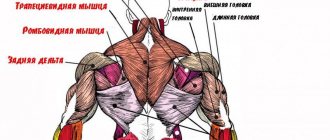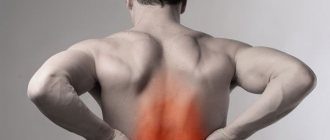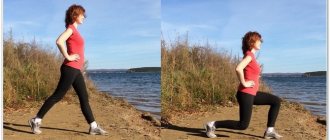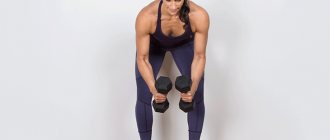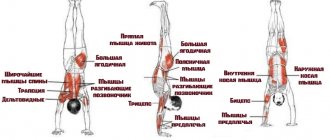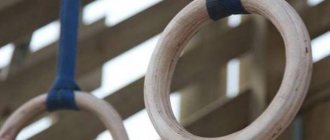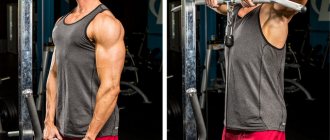Fitness and BodybuildingTips and Tricks
Posture can tell a lot about a person's character. She also talks about how well the muscles and joints work. Find out how to identify posture problems and how to correct them!
Author:
Kendall Louis Schmidt
Imagine that a strong, successful, self-confident person is standing in front of you. What will his posture be? Without a doubt, the person stands straight, with his chest pushed forward and his head held high. He looks like he's ready to rule the world.
Your appearance and well-being are directly related to your posture. Despite the importance of correct posture, most of us do nothing to improve it. We live our lives with a hunched back and a skewed pelvis and suffer from pain because we consider this to be a variant of the norm.
Living with poor posture is dangerous. Imbalance of muscles and joints, the causes of which lie in poor posture, can lead to all sorts of problems:
- Chronic pain in the back, neck and shoulder girdle
- Foot, knee, pelvis and back injuries
- Headache
- Lack of flexibility
- Fatigue
- Muscle weakness and atrophy
- Breathing problems
- Digestive problems
- Pinched and compressed nerves
- Sciatic nerve syndrome
- Carpal tunnel syndrome
But we are going to fix everything right now! Knowing what correct posture should be, you will be able to identify postural disorders in yourself and select corrective exercises to correct the situation. With good posture, you will become stronger and your muscles will work more efficiently. You will take care of preventing pain and injury, you will look better and feel much better.
Upper cross syndrome
The reason is joyfully simple: we sit for a long time, hunched over with our heads stretched forward, looking at our phones with a strong head tilt forward. Firstly, it is ugly, and secondly, it is harmful to health. What should I do?
What is upper cross syndrome?
It was first described by Dr. Vladimir Janda, a Czech doctor (psychiatrist!) who was particularly interested in the topic of muscular compensation of the body - postural imbalance.
He proved that poor posture is bad because movements are distorted, performed incorrectly, and as a result, some joints are overloaded, while others are limited in movement. And it's contagious.
Hunched shoulders and head forward, what is harmful to health?
Let’s take a simple metaphor for clarity, suppose you lied, and now you have to continue to lie and dodge, then more, and now you’re stuck, you can’t stop, you’re tired and don’t know how to tell the truth. It’s the same with posture - the head has moved forward, the shoulders and neck take on an unbearable burden, and so on.
What does it look like from the outside and how do you feel?
Can be seen by any passerby - hunched shoulders and head shifted forward. These postural changes are often accompanied by pain or stiffness in the neck, shoulders, and upper back.
And you will also experience:
Neck tension Jaw pain Impingement syndrome Shoulder pain Breathing problems Fatigue Decreased stability or range of motion in the shoulder Tingling or numbness in the arms and fingers Headache
Why does upper crossed syndrome develop?
Our body is an amazing tool, and the main surprise is called the phenomenon of adaptation. We are phenomenally adaptive, we can adapt to anything - I know some amazing stories, and you probably can too.
But, perhaps you don’t know, but the muscular system in this sense is more amazing than all the others - it adapts very quickly. And it is fixed in this position.
You just checked your email and messengers on your phone, but your head has already shifted and your shoulders have slid forward. And the longer, the bigger and stronger it is. By the way, the marvelous term “Text Neck” even appeared in the English-speaking space.
Unfortunately, if we don’t work with our posture - by default it gets worse and worse in these modern conditions - we sit a lot, use a lot of devices, look at the screen, and not at the sky and the horizon.
Posture problems: feet and ankles
Just like your shoulders, hips and back, your feet and ankles should be in the correct position, that is, pointing forward rather than inward or away.
We will focus on the main violations of the position of the feet and ankle joints. If you notice that you are experiencing one or more problems, try stretching and strengthening exercises to resolve the problem.
Violation 9: feet pointing inward
Thumbs facing the midline of the body
Overactive muscles:
tensor fascia lata muscle (on the outer thigh)
Stretch marks:
stretching of the iliotibial tract, myofascial release of the iliotibial tract
Weak muscles:
gluteus medius and minimus
Exercises:
Resistance bridge (with a resistance band around the hips), lateral walking with a resistance band, squats with a resistance band around the hips
Violation 10: One or both feet point outward
The big toes are turned away from the midline of the body
Overactive muscles:
piriformis and other deep rotator cuffs (deep muscles of the pelvis that connect the femur to the sacrum)
Stretch marks:
seated glute stretch, lying crossover, piriformis myofascial release, iliotibial tract stretch, iliotibial myofascial release, dancer stretch
Weak muscles:
hip flexors and obliques
Exercises:
cocoon, fitball crunches, hanging leg raises
So what happens to the body?
Upper cross syndrome is about the neck and shoulders (shoulder blades). The neck and shoulder are very mobile structures of our body. Mobility is provided by muscles, which have the property and tendency to easily stretch and shorten.
Unlike the hip joint, which is much more stable in its tasks and structure (its task is serious - to keep the body weight in an upright position), the shoulder is unstable and vulnerable, which also helps it provide a huge number of different movements in a high range - where do our little hands go? They just won’t reach it unless they twist it.
The shoulder is strengthened by muscles, the joint is susceptible to dislocations and instability, injuries, but is highly functional. It's like a strong craftsman and a vulnerable poet. Each one is tailored to its own task, everything is logical. The body is very logical and consistent.
Let's introduce another key concept - duality, balance, opposing forces, if you like - light and shadow. Everything is the same in the body. If one muscle flexes, there is certainly another that extends.
Some turn inward, others turn outward. Antagonists. And how we all dream of balance: to have love and money, and be beautiful and smart. The body dreams of the same thing, I assure you. To both the rhomboid muscle and the levator scapulae, running forward.
If one muscle becomes weak due to injury, overuse, or poor posture, the opposing muscles become shortened and strengthened. The weaker the first becomes, the stronger the opposite becomes. Something similar happens in real couples, don’t you think?)
A set of exercises for upper cross syndrome
Everything is simple here - we strengthen weak muscles and stretch shortened ones. To level the position of your head, do the exercise with your chin (it’s better to start against the wall or lying on the floor).
Exercise 1. Chin nod (strengthening deep neck flexors)
Stand straight with your back to the wall. Press the back of your head against the wall, lower your shoulders. Make a slight nod with your chin, lightly press your chin to your chest and hold in this position for 5-10 seconds. You should feel a stretch in the back of your neck. Voila!
Exercise 2. Stretching the pectoral muscles
Stretching the chest
Exercise 3. Stretch the levator scapulae muscle
Stretch the upper trapezius
Exercise 4. Strengthen the rhomboid muscles and lower trapezius
Exercises for the rhomboid muscles
Upper crossed syndrome, and the rounded shoulders it contains, suggests that the shoulder blades are too far apart because the muscles have become too long and weak. If you squeeze your shoulder blades together, you will notice your shoulders moving back. You can use cobra pose.
The root of the problem
To solve a problem, you need to find its true cause. Most postural problems are caused by imbalances in the muscles that surround a particular joint. Simply put, one muscle group is in hypertonicity, and the antagonist muscles are too weakened.
For example, people with rounded shoulders often have tight pectoral muscles, which pull the shoulders forward and rotate them toward the midline of the body. Add weak back muscles to tight pectoral muscles and you have an imbalance that pulls the shoulder girdle out of its normal position. When such an imbalance occurs, overactive muscles compensate for the weakness of the antagonists, resulting in tension, fatigue and discomfort.
The simplest and most effective way to eliminate distortion is to stretch tense muscles and strengthen weak ones.
Make correcting your posture a priority
This is where it all begins. The good news is that with proper treatment with a combination of exercises and/or physical therapy, upper crossover syndrome can be eliminated and full range of motion of the shoulders and neck can be restored.
If this problem is almost as old as you are, it may take some time to teach your body to readjust itself, so be patient. Give yourself time - the most precious gift.
Another essential thing is to maintain proper form and posture during exercises and stretches. Keep your head pulled back and your neck long, with your shoulders back and down away from your ears.
Do exercises in front of a mirror, film yourself on your phone. Ask (demand/wringe hands) the coach to pay special attention to this. You'll notice how you feel better, but that's not the only benefit of good posture!
You can learn how to correct your posture, get rid of upper crossed syndrome, open your chest, correct the angle of your pelvis, and learn lifting techniques in the online course “Face and Body for a Million.” Follow the link and choose the course program! If you have not subscribed to the newsletter, subscribe now to receive secrets of beauty and youth using the link here
Kettlebell Fitness
Author: Dr. Ron Tyzkowski
Vladimir Janda was one of the most prominent physiotherapists in the world at the end of the 20th century. A pioneer in the development of treatments for diseases of the human lower lumbar region, he perfected his skills in communist Czechoslovakia. While Western scientists were struggling with this disease, performing operations on the lumbar spine, thereby turning people into “helpless creatures” (Waddel, G. 1992), Vladimir Yanda achieved amazing results in the methods of treating this disease. He used swinging benches, sticks, exercises with balls (probably weights) and most importantly his hands. After the collapse of the Soviet Union and the formation of the Czech Republic, working with Janda and his colleagues became much easier. In the early 90s, a group of progressive chiropractors and physical therapists began teaching Janda's techniques in the West, thereby forcing most of us to look at physical therapy differently.
One of the main (if not the most important) research of Vladimir Yanda was “Lower Cross Syndrome”. “Lower cross syndrome” is a very common phenomenon in Western society, as most of these people lead a sedentary lifestyle. It is these habits that can lead to tension and hyperactivity of the hip flexors (hip flexors). Due to reciprocal inhibition (a process in the human body that provokes the contraction of one muscle group, which in turn inhibits the work of the antagonist muscle group), hyperactivity and tension in the hip flexor muscles can impede the work of the hip extensor muscles, and most importantly, the gluteus maximus muscle. . This imbalance can lead to serious gait disturbances. Because people with this diagnosis are unable to perform hip flexion using the gluteus maximus muscle, they instead use the psoas extensor muscles as a substitute. They, in turn, become rigid, inelastic and hypertonic, and through mutual substitution, interfere with the work of the abdominal muscles. The result of this replacement is a large belly (this happens due to poor nutrition and lack of physical activity). Lifting weights and walking, primarily using the lumbar extensor muscles, leads to an increase in biomechanical tension in the muscles of the lumbar spine, which causes constant pain, osteoarthritis and herniated discs.
One of the key points in treating low back pain is to find the right approach that will help you get rid of this disease forever. In my past life (before I started lifting weights), I would have used rocking board exercises, ball exercises, and more to treat lumbar problems. Such exercises were equally difficult and effective (and also monotonous), and they also required many pieces of special equipment to perform them. When I began learning about kettlebell exercises, I was very surprised at how simple movements like the kettlebell swing, kettlebell rack snatch, and kettlebell overhead snatch could not only correct the movement dysfunction that I had been trained to recognize, but also improve cardiovascular health. the vascular system and contribute to the development of strength in humans. The most common disorder was “Lower Cross Syndrome.” What was surprising was that the “Swinging” kettlebell exercise seemed to be specially designed to treat this syndrome. The correct technique for performing the “Swinging the weight” exercise involves, when lifting the weight, lowering it using the lumbar spine and neutral flexion of the hip muscles, and when moving the weight forward, it is necessary to apply a force that affects the good functioning of the lumbar and hip joints. This exercise simultaneously stretches and relaxes the hip flexors (particularly the glutes) and teaches lumbar control. In addition, the second part of the “Swing” - moving the weight forward, strengthens the abdominal muscles, and also stretches and relaxes the paravertebral muscles; Great win-win scenario!
Thus, performing the “Kettlebell Swing” exercise or learning the technique of doing it not only helps your client/patient stay in good physical shape, but also has a corrective effect on one of the most common dysfunctional disorders in Western society!!!
Analysis
History and Research One day, a 35-year-old man complained of back pain that had been going on for a year. The patient has a sedentary job. He has to travel a lot, which means he spends a lot of time sitting. He had no injuries or serious damage to his back. But the pain continued to bother me for many days and hindered my movements. The pain especially made it difficult to do exercises on a bicycle. Because of the pain, the load was minimal. There were no complicating factors. MRI results were negative for structural abnormalities such as disc herniation, disc compaction, or osteoarthritis.
Research has revealed that the source of pain is in the lumbar spine. An assessment of the patient's movements showed that he had significant changes in the pelvic flexor joints, that is, the work of the lumbar flexor muscles was replaced by the work of the hip flexor muscles.
Treatment Methods To reduce pain and properly treat musculoskeletal dysfunction, there are various techniques - chiropractic, cold laser, soft tissue massage, etc.).
Let's look at the story of patient Anthony Deluglio and kettlebell training.
Kettlebell training The workout begins with a warm-up (the first day in the gym), which includes exercises “swinging a kettlebell” (swinging a kettlebell with one hand, two hands, swinging a kettlebell with transferring the kettlebell from hand to hand), snatches, sumo deadlifts, “windmill” exercise, tactical lunge, etc.
After the initial warm-up and during subsequent workouts, the pain in the lumbar region did not intensify.
Continuation of training The patient continues weight training on his own, the above symptoms began to bother him less. He was able to start exercising on an exercise bike again and it does not cause him any harm or inconvenience.
Notes The patient was advised to continue training with weights until all symptoms resolved. In some cases, it was noticed that the pain that the patient felt before starting exercise gradually disappeared during exercise. Structural abnormalities such as compacted spinal discs and osteoarthritis do not exclude kettlebell training as a treatment method. In this case, the course of training may be changed.
Dr. Ron Tyzkovsky is a practicing chiropractor working in Providence (USA, Rhode Island). He has been training with kettlebells for many years and using them to treat injuries. You can learn more about kettlebell training after injuries on the Internet blog by following the link www.KettlebellDoctor.com

